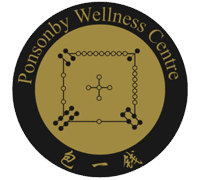If you need professional treatment, please call 0212159963 or make an appointment online here
Period Pain Relief by Acupuncture
Published Friday 21 July 2017
By Maria Cohut
The findings of a new study have shown that the intensity and duration of period pain can be reduced by up to 50 per cent by administering manual acupuncture.
Acupuncture can significantly reduce period pain, according to a new study.
Period pain, or dysmenorrhea, is a condition affecting up to 95 per cent of menstruating women, according to a report published in the journal Human Reproduction Update.
Dysmenorrhea is classified into two types: primary, wherein no known health conditions can account for the painful cramps, and secondary, during which the pain occurs as a result of a diagnosed disorder, such as endometriosis or uterine fibroids.
A new study led by Australian researchers tests the effectiveness of acupuncture treatments in relieving period pain.
The study was conducted by Dr Mike Armour, of the National Institute of Complementary Medicine (NICM) at Western Sydney University in Australia, and his colleagues from the Department of Obstetrics and Gynaecology at the University of Auckland, also in Australia. Their findings were published in the journal PLOS One.
Frequent sessions are the most effective
Seventy-four adult women aged between 18 and 45 were involved in the study. They all had confirmed or suspected primary dysmenorrhea, and no diagnosis leading to the detection of secondary dysmenorrhea.
The women were randomly split into four groups: two high-frequency groups and two low-frequency groups. One high frequency and one low-frequency group were assigned manual acupuncture treatments, with the remaining two undergoing electroacupuncture, wherein the needles are connected to a device that transmits electric impulses to the body.
The participants in the high-frequency groups received three acupuncture treatments 1 week prior to the start of their menstrual period. Meanwhile, the women in the low-frequency groups received three treatments every 7 to 10 days, between their menstrual periods.
Study shows why acupuncture might work for period pain relief
Why is acupuncture an effective alternative treatment?
All participants were administered 12 acupuncture treatments over three menstrual cycles. They also underwent treatment in the first 48 hours of their menstrual period.
It was found that the women undergoing acupuncture more frequently experienced more significant improvements in period pain intensity and related symptoms, as well as in the overall quality of life.
The researchers do acknowledge, however, that larger trials are needed if specialists are to develop detailed, accurate guidelines for the use of acupuncture in the treatment of this complaint.
“Pragmatic trials of acupuncture have shown a reduction in pain intensity and an improvement in the quality of life in women with period pain, however evidence has been limited for how changing the ‘dosage’ of acupuncture might affect the outcome,” says Dr Armour.
Manual or electroacupuncture?
All the participants involved in the study were asked to keep a diary providing details about the development of their menstrual period symptoms throughout the trial.
The researchers were surprised to find that more than half the women undergoing manual acupuncture experienced a decrease in period pain and related symptoms of up to 50 per cent.
This made manual acupuncture significantly more effective in treating period pain than electroacupuncture, overall.
Our pilot study found that using manual stimulation of the needles, rather than an electrical pulse, resulted in a reduced need for pain-relieving medication and improvement in secondary symptoms such as headaches and nausea.”
All the treatments administered over the course of the study conformed to a manualized protocol relying on data collected from a survey of specialized acupuncturists from Australia and New Zealand, alongside focus groups.
The treatment was grounded in traditional Chinese medicine practices as well as the Zang Fu system, which identifies the unique attributes of each organ and the ways in which they relate to each other.
Dr Armour and colleagues’ findings are intriguing, and they may point to a new treatment for women seeking to minimize the impact of dysmenorrhea on their lives.
